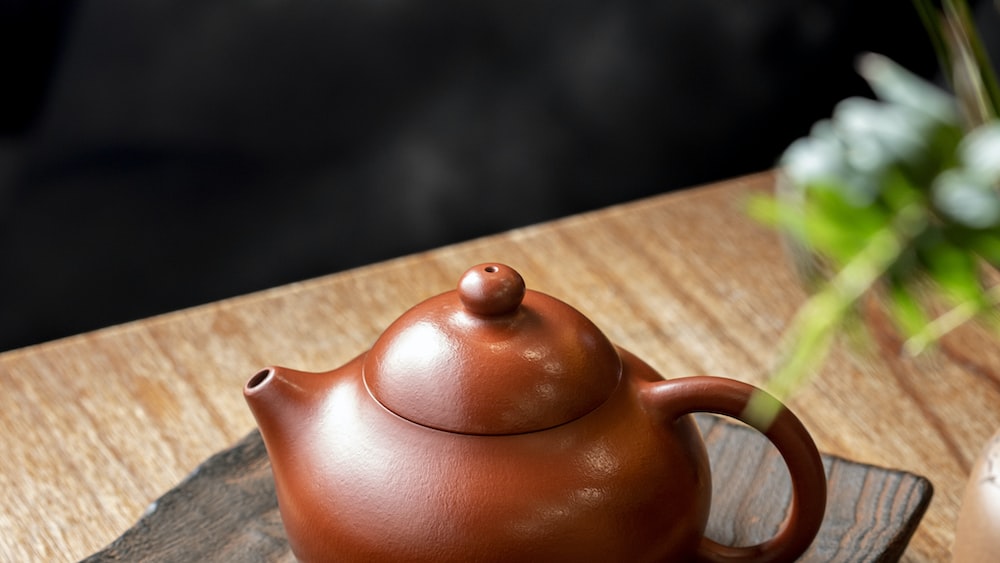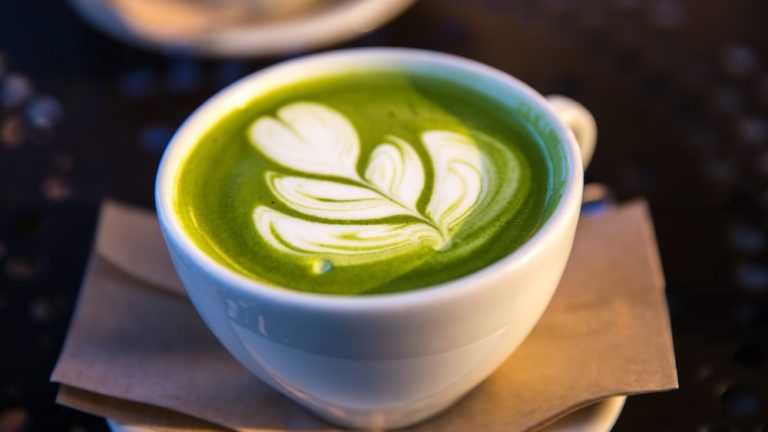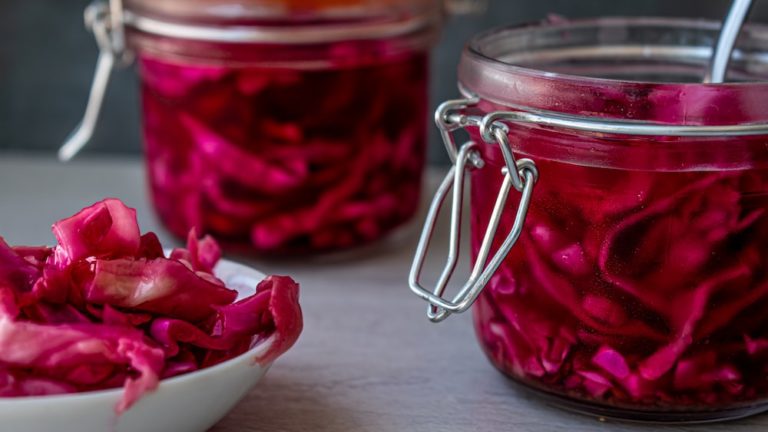Unveiling The Truth: White Tea Oxalate Content Revealed!

Unveiling The Truth: White Tea Oxalate Content Revealed!
Hello, lovely tea people, and those who might just be teetering on the precipice of becoming delightful tea fanatics. Aren’t we all just like Alice in Wonderland, tumbling headlong into the fascinating world of tea, where each new discovery leaves us as giddy as the Mad Hatter during tea-time? Yeah, that sounds about right.
Dive in, folks, because today we’re brewing a pot of hot conversation around a cool companion of tea: oxalates. Yeah, I know – oxalates might seem about as interesting as watching paint dry, but hold onto your teacups people, because the relationship between them and our beloved tea, specifically white tea oxalate content, is quite a tea tale to tell!
Understanding Oxalates
Before we embark on this riveting journey, let’s lay down some base knowledge. It’s like having a solid tea tray before you start pouring, right?
What are Oxalates?
Lending a whole new meaning to the term “crystal clear”, oxalates are essentially organic acids present in certain foods, and they team up with minerals in our bodies to form – wait for it – crystals. Imagine, our bodies could be hosting microscopic crystal tea parties every time we sip our favorite brew. As fascinating as it sounds, too much of this party can get a bit out of hand.
To make matters a wee-bit more complicated, our bodies also produce oxalates. It’s as if they’re saying, “Hey, we can take care of the crystal decor, thank you!” Fascinating, isn’t it? Who knew sipping your beloved cup of white tea was akin to a microscopic soiree of crystal formations!
Oxalates, organic acids found in certain foods and produced by our bodies, can form crystals when combined with minerals, creating microscopic crystal formations that can get out of hand if consumed in excess.
How Oxalates Impact Health
As it turns out, unlike most parties, this oxalate shindig isn’t exactly beneficial for our health. Let’s run through the reasons.

For starters, the minute these oxalates form crystals with calcium in our bodies – a process that sounds like it should result in us becoming superheroes but doesn’t – they can lead to the dreaded kidney stones. “But I like my kitchen counter,” I hear you say, “not keen on having mini versions of it rattling around in my kidneys!”
Exactly why we are here! And for those who already soldier through conditions like hyperoxaluria and enteric hyperoxaluria, the invite to the oxalate feasting needs careful scrutiny.
The Connection Between Tea and Oxalates
Our beloved tea, from brilliant black to grand green and wonderful white, is a significant provider of dietary oxalates. That’s right. Your favorite cuppa could be throwing secret oxalate parties and not even have the decency to give you a heads-up.
Oxalate Content in Different Types of Tea
Now, don’t start panic-dumping your tea tins yet. Not all tea parties are crystal-fests. It turns out, the oxalate distribution isn’t uniform among the colorful family of teas – the black sheep may not be so black, after all.
- Black Tea: The ever-lovable, robust black tea does have a higher oxalate count than we’d like but hey, everyone has their quirks, right?
- Green Tea: Then there’s the mystical green tea, it lowers its oxalate hat compared to black tea, showing us just why it’s taken the health world by storm.
- White Tea: Last but not least, white tea oxalate content remains an enigma, waiting to be unraveled. That’s the very mystery we’ll unveil today, tea-lovers.
As our oddly delightful journey continues, let’s discuss how this entire oxalate formation goes down in tea.
The Process of Oxalate Formation in Tea
Tea trees, much like that artsy friend we all have, love to express themselves. One such expression is the development of oxalic acid. This acid eventually whips up those cheeky crystals known as oxalates when it swings out with certain elements like calcium.
Interestingly, the amount of oxalate in tea is also affected by how it’s grown and processed. Lo and behold, the plot thickens! So depending on how your favorite tea was pampered and prepared, it could be hosting a wild oxalate party or a calm gathering.
Tea trees love to express themselves by developing oxalic acid, which can form oxalates when combined with certain elements like calcium, and the amount of oxalate in tea is influenced by its growth and processing methods.
Focusing on White Tea
Our spotlight today is on the elegant and elusive variety – the white tea. Fabled for its subtle flavor and equally nuanced health benefits, let’s find out if the crystal decor at its party is as understated as its character!
What is White Tea?
Welcome to the less trodden path of the tea world – the gentle wonders of white tea. Fraught with delicate flavor and a feathery light color, white tea seems like the ethereal fairy of our tea cast.
But what makes white tea so different from its counterparts? Quite simply, it’s all down to the process. White tea is typically harvested at an embryonic stage, you know, when the future tea leaves are still dreaming of becoming the brew in your cup. Post-harvesting, these young leaves undergo minimal processing, retaining their near-natural state. So as far as the tea story goes, white tea is the closest you’ll get to sipping tea straight from the garden!
Nutritional Profile of White Tea
White tea, the undervalued cousin of the much-acclaimed green and black tea, shines in its minimalism. It’s akin to the ‘no makeup’ makeup trend – pure, elegant, and subtly powerful. It gets its royalty not from heavily-guarded secret recipes, but from its birthright – the nutrients it naturally carries and preserves.
At the heart of its nutritional profile is a treasure trove of antioxidants. Polyphenols, like catechins and flavonoids, that moonlight as health-saving agents are in abundance. Do they rescue you from the evil clutches of oxidative stress and inflammation? Indubitably yes! They help in quelling the rebellion of free-radicals, the little anarchists that they are.

But surprises in the pantry of white tea don’t end here. It is also rich in several essential vitamins and minerals which include Potassium, Magnesium, Manganese, and Zinc. No wonder you find white tea strutting around with an air of modest superiority!
Unveiling the Oxalate Content in White Tea
We now arrive at the crux of our tea debate- the infamous “white tea oxalate” situation. It’s time to dive deep into this labyrinth and discover the truth about the oxalate character that seems to have triggered a bit of a tea commotion.
How Much Oxalate is in White Tea?
“In Every Truth, There’s An Alarm Bell”, isn’t there? Buckle up tea enthusiasts, because here comes the bittersweet truth. White tea does contain oxalates. Yes, you heard it right- those pesky, calcium-loving compounds have made way into our beloved white tea too!
While there are varied opinions and conflicting studies on the exact levels, one thing’s for sure – the oxalate content in white tea is not negligible. But before you spill your cup of white tea in a knee-jerk reaction, let’s delve a little deeper. How does this oxalate presence stack up against other teas?
Comparing Oxalate Levels: White Tea vs. Other Teas
As we step into the ring for this tea-vs-tea showdown, let’s bring clarity to one thing – all teas inherently contain oxalates. Sounds like a conspiracy, doesn’t it? But truth be told, it’s more of a tea trait than a tea flaw.
White tea, however, seems to sit somewhere in the middle of the oxalate potency continuum. While it does contain fewer oxalates than its robust cousin black tea, it does surpass the oxalate content recorded for green tea. Again, remember this is a generalized comparison, and the oxalate content in tea can vary due to factors like the type of tea, growing conditions and brewing methods.
On the brighter side, if you’re caught in the ‘I love tea but hate oxalates’ conundrum, white tea might be the neutral ground you’re seeking. It’s not the high-oxalate villain, nor the skewer-thin damsel in distress. White tea successfully maintains a fine balance, rather like a diplomat amongst teas!
White tea strikes a balance between high-oxalate black tea and lower-oxalate green tea, making it a good choice for those concerned about oxalate content.
Implications of White Tea’s Oxalate Content
The plot thickens as we explore the implications of the white tea oxalate intrigue. Brace yourself, our tea-time mystery is about to subtly blend into a health-oriented drama!
Is White Tea Safe for a Low Oxalate Diet?
Profoundly deep question, isn’t it? Well, in the grand play of diet and nutrition, white tea plays a bit of a grey character. As previously noted, white tea does contain oxalates- not alarmingly high, but not trivial either.
- If you’re an otherwise healthy person, this should hardly be a concern. For you, the overall benefits of white tea might outweigh the potential risks associated with its oxalate content.
- However, if you’re dieting your way towards a kidney stone-free life adhering to a low oxalate regimen, then the white tea oxalate conundrum turns topical. Here, the balance of its nutritional wonders against oxalate concerns leans somewhat towards caution.
- Lastly, for those who are keen on reducing overall oxalate intake, choosing white tea over black might be a prudent compromise. You still get to savour the warmth of a tea cup sans the significant oxalate worry.
How White Tea Affects Kidney Stones and Other Health Conditions
Now the question is, can the humble white tea oxalate, considered moderate at best, still rattle your kidneys? Indeed, they can. Oxalates, like opportunities, take the form of mighty crystals when they meet their calcium liaison in your kidneys.
Kidney stones are a well-known, painful aftermath that can occur from this otherwise romantic rendezvous. An elevated oxalate intake tends to increase the incidence of kidney stones, especially in individuals who are already at risk. So, if kidney stones are your arch-nemesis, you might want to rethink that generous pour of white tea.
Reducing Oxalate Intake from White Tea
But don’t despair, white tea lovers! With a few tweaks and adjustments, you can continue to bask in the white tea experience without inviting the calcium oxalate monsters to the party. Let’s dive into these careful considerations and steadfast strategies!

Tips for Brewing White Tea to Minimize Oxalate
Here’s the inside scoop, folks. Brewing white tea the right way is like mastering the perfect pirouette. A tad dramatic, I know. But let it steep too long, and you’re at risk of experiencing an oxalate ballet in your body. Now, the thought of tiny oxalate crystals pirouetting through our systems could amuse us. Except, I’m not sure our kidneys would find it as amusing!
The first rule of thumb – don’t over steep your white tea. Reducing the brewing time can limit the amount of oxalates released. Also, consider using water that’s under the boiling point. Much like a proud peacock, white tea thrives in cooler climes and it also curtails the oxalate transfer.
Lastly, and this could make you feel like a mad chemist – consider adding some calcium to your diet. Why? Calcium is like a charming pied piper that binds the oxalates in the gut, reducing their absorption. So, next time you prepare your favorite leaf tea, remember these little tips and your kidneys will thank you!
Other Dietary Adjustments to Consider
Now, onto more exciting adventures in your culinary world. We’ve brewed our white tea right. But what about the food that goes with it? If our bodies were a chic night club, oxalates could be the party crashers. And, unfortunately, these uninvited guests aren’t only found in teas, but in several foods we eat.
If our diet is high in oxalates, then we are rolling out the red carpet for these party crashers. So, moderating your oxalate intake involves more than just monitoring your tea-drinking habits. High oxalate foods include nuts, certain vegetables like spinach and rhubarb, and grains, to name a few. A nutritionist can help you construct an oxalate-conscious plan that keeps the party crashers at bay while ensuring you still enjoy a varied and balanced diet.
And remember, when monitoring oxalate intake, balance is key. Incorporating a variety of leafy greens, fruits, proteins, and carbs can ensure your diet remains balanced. So, while the white tea is brewing, consider these dietary adjustments.
Frequently Asked Queries About Oxalates and White Tea
1. Does the type of white tea affect its oxalate content?
The oxalate content can indeed vary between different types of white tea. Factors such as the processing method and the specific variety of the tea plant used can impact the final oxalate count.
2. Can I drink white tea if I have a history of kidney stones?
If you have a history of kidney stones, it’s advisable to monitor your white tea consumption. White tea does contain oxalates, which may contribute to stone formation. However, this doesn’t mean you have to eliminate white tea completely – moderation and proper brewing techniques can help limit oxalate intake.
3. How does white tea compare to green and black tea in terms of oxalate content?
When comparing oxalate content, white tea generally has a lower content when compared to its green and black counterparts. Bear in mind though, the brewing time and temperature can affect the oxalate release.
4. Are there any other health concerns related to oxalate intake from white tea?
Beyond kidney stones, a high oxalate intake, including from white tea, can also impact certain individuals with leaky gut, thyroid issues, or those susceptible to forming oxalate crystals in other areas of their body.
Conclusion
We’ve journeyed through the realities of white tea oxalate content, and I must say, it’s been quite an exploration. When done with care and knowledge, enjoying a lovely cup of white tea can be part of a balanced, oxalate-conscious diet.
At the end of the day, it’s all about the rhapsody of savoring that perfect cup of white tea while being aware of the oxalate content. With a bit of practice, we can perfect the art of brewing that delectable cup all while pirouetting gracefully away from escalating oxalate levels.
I hope that your journey with white tea continues wonderfully, and that your relationship with oxalates now has a little more clarity. Remember, in the dance of diet and delights, we are all learners. Until our next tea adventure, stay curious and keep brewing. Lovingly, Zoe.






